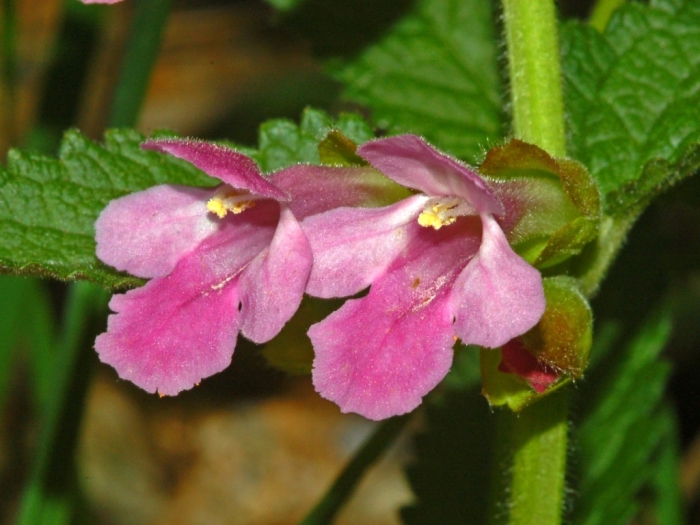Bastard Balm
(Melittis melissophyllum)
Bastard Balm (Melittis melissophyllum)
/
/

Hectonichus
CC BY-SA 3.0
Image By:
Hectonichus
Recorded By:
Copyright:
CC BY-SA 3.0
Copyright Notice:
Photo by: Hectonichus | License Type: CC BY-SA 3.0 | License URL: https://creativecommons.org/licenses/by-sa/3.0 | Uploader: Hectonichus | Publisher: Wikimedia Commons | Title: Lamiaceae_-_Melittis_melissophyllum-3.JPG | Notes: {{Information |Description={{en|1=The Baney Hole near Windyhouse Farm, Barrmill, Ayrshire, Scotland. An old quarry or bell pit.}} |Source={{own}} |Author=[[User:Rosser1954|Rosser1954]] Roger Griffith |Date=2010-08-24 |Permission= |other_versions= }























































Estimated Native Range
Summary
Melittis melissophyllum, commonly known as Bastard Balm, is a perennial herb in the Lamiaceae family. It is native to a range of habitats including open woodlands, forest edges, and grassy clearings across Europe and into western Asia. Bastard Balm typically reaches 30–50 centimeters (12–20 inches) in height and is characterized by its erect, hairy stems and a perennial short rhizome. The leaves are heart-shaped, and the plant’s appearance can be quite variable in terms of leaf shape and coloration. The flowers are particularly showy, usually white or pale pink with a prominent pinkish-purple blotch on the lower lip, blooming from May through August. The flowers are aromatic and are mainly pollinated by bees and moths, making them a valuable addition to pollinator gardens.
Bastard Balm is appreciated for its aromatic foliage and attractive flowers, which make it a good choice for sunny woodland gardens, borders, and as a ground cover. It is also used for its ornamental value in cottage gardens and informal garden settings. This plant prefers full sun but can tolerate part shade and requires medium amounts of water. It is adaptable to a variety of soil types, provided they have good drainage. ’Royal Velvet Distinction’ is a notable cultivar with particularly striking flowers. While generally low-maintenance, Bastard Balm can be susceptible to root rot in overly wet conditions and may require protection from slugs and snails. It is not known to be invasive and does not typically present problems with aggressive roots or diseases.CC BY-SA 4.0
Bastard Balm is appreciated for its aromatic foliage and attractive flowers, which make it a good choice for sunny woodland gardens, borders, and as a ground cover. It is also used for its ornamental value in cottage gardens and informal garden settings. This plant prefers full sun but can tolerate part shade and requires medium amounts of water. It is adaptable to a variety of soil types, provided they have good drainage. ’Royal Velvet Distinction’ is a notable cultivar with particularly striking flowers. While generally low-maintenance, Bastard Balm can be susceptible to root rot in overly wet conditions and may require protection from slugs and snails. It is not known to be invasive and does not typically present problems with aggressive roots or diseases.CC BY-SA 4.0
Plant Description
- Plant Type: Herb
- Height: 1-1.5 feet
- Width: 1-2 feet
- Growth Rate: Moderate
- Flower Color: Purple, White
- Flowering Season: Spring, Summer
- Leaf Retention: Deciduous
Growth Requirements
- Sun: Full Sun, Part Shade
- Water: Medium
- Drainage: Slow, Medium, Fast
Common Uses
Bee Garden, Butterfly Garden, Deer Resistant, Fragrant, Low Maintenance, Showy Flowers
Natural Habitat
Open woodlands, forest edges, and grassy clearings across Europe and into western Asia
Other Names
Common Names: Immenblatt
Scientific Names: , Melittis melissophyllum, Melittis melissifolium, Melissophyllum silvaticum, Melittis melissophyllum subsp. carpatica, Melittis melissophyllum var. carpatica, Melittis melissophyllum var. sarmatica,
GBIF Accepted Name: Melittis melissophyllum L.